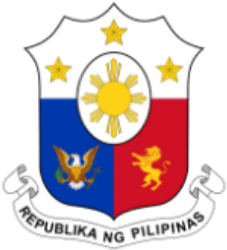More income from arrowroot cookies
by Erwin S. Embuscado (November 10, 2006)
Arrowroot cookies, anyone?
The province of Marinduque is not only popular for being the butterfly capital of the Philippines or the Lenten Mecca of the Southern Tagalog because of its moriones festival every Lenten season. Marinduque is also known for its arrowroot cookies. Since 1946, the province also stands out for its popular pastry with golden brown, crispy with unique taste, and definitely melts in your mouth- arrowroot cookies.
Arrowroot cookies use a particular flour that is extracted from the arrowroot rhizome, locally known as uraro. It is made up of first class high fiber extract from arrowroot.
Arrowroot as added source of income
The early inhabitants of Marinduque lived by farming and fishing as they consider agriculture their main source of revenue. Coconut is the primary crop of the province followed by palay. They also plant corn, banana, coffee, mango, peanut and root crops like arrowroot.
Arrowroot is a herbaceous plant with thick, fleshy, long white fibers. It is organically grown. It grows in well drained soil and open to sunlight. Arrowroot matures in 9 to 11 months after planting and reaches up to 80 centimeters in height.
The arrowroot plant is utilized both for human and animal consumption. It can be boiled and eaten like corn. In Marinduque, it is boiled in coconut milk and salt to taste. Arrowroot also serves as poultry feed. Its stem, leaves and wastes are feeds for ruminants (cattle, goats, carabao), and the extracted fiber is used for feeding swine.
The great demand of arrowroot in the local market has prompted more Marinduqueño farmers to engage in arrowroot production. Today, 70 hectares of land in different municipalities of the province are planted with arrowroot. The farmers plant the raw materials for their own family's consumption and for the newly established processing plant in Marinduque. Farmers produce an average of 8 tons per hectare, earning P28,000 per hectare.
'Based on our data, production expenses of arrowroot reach P21,580 per hectare including land preparation, planting, cost of materials, harvesting, handling and other materials The return on investment (ROI) is 27 percent and can reach up to 15-20 tons per hectare,' said Susan J. Bonode of the Provincial Agriculture Office and the project coordinator on postharvest technology . Susan is a young, dynamic and dedicated extension worker, who is also a member of the BPRE Postharvest Specialist Network in Luzon.
With more farmers venturing into arrowroot production, the bakeries of the province are assured of available raw materials. Farmers are also assured of an additional source of income.
Booming industry
There is a big demand of arrowroot flour in the market, 'The arrowroot flour is used for cookies, pancake, breading and thickening for ice cream and sauces. This is originally made only in Marinduque. As Susan declares 'Our cookies have a distinct indicator. If you taste our cookies, these easily melt in your mouth.'
Seeing the industry's potential, Susan assisted Mrs. Carmelita Rejano Reyes, owner of the Rejano's bakery, on how they can help in processing the farmer's produce. Mrs. Reyes is their collaborator who pioneered the making of original arrowroot cookies. At present, they are trying to produce good quality arrowroot flour through mechanized processing which will supply the bakeries in the province and its nearby provinces.
They sought the help of government agencies and private institutions on how they can acquire modern equipment like washer, shredder, extractor, spinner and dryer to process the farmer's harvests. These equipment are aimed at solving the laborious and tedious production of arrowroot starch of the farmers.
Through the support of the Department of Science and Technology (DOST)- Regional Office IV and private individuals, the Rejano's bakery was able to set-up an arrowroot processing facility with complete equipment.
The other government agencies and private institutions who helped in the arrowroot project were the BPRE, Department of Trade and Industry (DTI), DOST, Bicol University's College of Agriculture and Forestry (BUCAF), KOLBI, Technical Education and Skills Development Authority (TESDA), Department of Agrarian Reform (DAR), Local Government Units (both Municipal and Provincial), and Department of Health (DOH)-Bureau of Food and Drugs (BFAD).
BPRE intervention
When Susan became member of the BPRE PHSN in 1997, she attended different training courses conducted by BPRE with the other agricultural officers and extension workers in the country. Thus, she became attuned to the recent developments in the postharvest industry, and got herself involved in arrowroot processing among other projects in Marinduque.
'BPRE is one of the agencies who helped us in this project (arrowroot processing). We owe so much from BPRE...' says Susan.
Engr. Raul R. Paz, acting director II of the Postharvest Systems Department narrated how BPRE helped in arrowroot processing, 'When they requested assistance from BPRE, we visited the site and found that there has to be an improvement in the technologies and systems they adopted. We linked them to agencies and other institutions that could help them and it was the DOST who provided the financial assistance.'
Before the acquisition of the facilities, they only produced cookies during summer because they were operating manually. 'The starch recovery ranged from 11-14% only. Mahirap nang mag-extract, hindi pa sure ang quality (It was difficult to extract and we were not even sure of the quality),' Susan said. Aside from the longer period of producing starch manually, the demand of the processor cannot be met and sometimes the quality of flour was substandard. 'Kaya kinakailangan ng makina para mas mapadali. Kailangan din na dumaan sa quality control (We needed machinery to make the operation easy for us. It is also needed to pass the products for quality control),' she added.
Aiming for the global market
The arrowroot flour has a very high commercial value. Today, there is an increase in market demand for the raw materials abroad because they are using it for making high quality biscuits and cookies.
Susan said they are still in the process of making the products available in the global market. Several months ago, Mrs. Reyes met a group of exporters in Japan and she was requested to make cookies with desiccated coconut. She tried and sent the products to the Japanese exporters who liked it. Because of their positive reaction, it is possible that the cookies can be exported to 30 countries.
'Mrs. Reyes already established markets in SM and Robinson. Within the next two years we are expecting that this project will be full-blown', Susan added.
However, there are still various economic and environmental issues that need to be addressed. Marketing and financial concerns, more postharvest facilities and advance processing technologies, and the lack of technical know-how and capability to manage waste and utilize energy efficiently are just some of them. Although, responding to these issues would mean additional expenses, they do not always have to break eggs to bake a cake. There are available resources and free assistance from experts willing to extend a helping hand.





